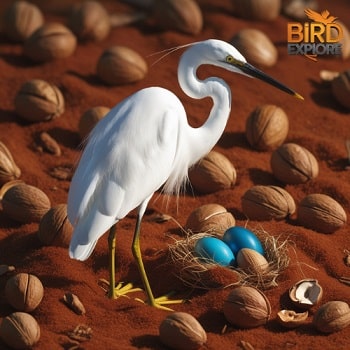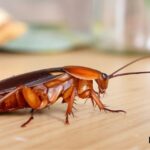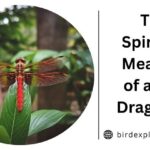Bird lays beautiful blue eggs captivate bird watchers and nature enthusiasts alike. The vibrant hues of these eggs not only draw our attention but also serve important ecological purposes. In this article, we will explore the enchanting world of bird lays beautiful blue eggs , examining the species, their nesting habits, the ecological significance of their unique egg color, and ways to support these remarkable creatures.
Understanding the Phenomenon of bird lays beautiful blue eggs

What Causes bird lays beautiful blue eggs?
The stunning blue color of bird eggs primarily results from the presence of biliverdin, a pigment derived from the breakdown of hemoglobin. Birds deposit biliverdin in the eggshell during formation, which creates the characteristic blue hue.
Factors like genetics, diet, and environmental conditions can influence the intensity of this color among species and individuals.
Key Points:
- Biliverdin: This pigment gives eggs their blue color.
- Genetics: Genetic variations can affect the shade of blue.
- Environmental Factors: Diet and habitat can influence egg coloration.
Benefits of bird lays beautiful blue eggs
Bird lays beautiful blue eggs coloration serves several vital functions:
Camouflage: The blue hue helps eggs blend into their natural surroundings, making them less visible to predators. This adaptation is crucial during the nesting period when eggs are most vulnerable.
Temperature Regulation: Blue eggs can absorb sunlight better than lighter-colored eggs, helping maintain an optimal temperature for developing embryos.
Antimicrobial Properties: Research suggests that the composition of blue eggshells offers some protection against bacteria, enhancing egg viability.

Scientific Insights into Egg Coloration
Bird egg coloration fascinates evolutionary biology. Studies show that specific egg coloration can impact reproductive success. For instance, species that have blue eggs often experience lower predation rates than those with lighter-colored eggs.
This phenomenon illustrates the balance between natural selection and reproductive strategies.
Identification of Bird Species That Lay Blue Eggs
Several bird lays beautiful blue eggs species are renowned for laying blue eggs. Each species exhibits distinct characteristics and behaviors that make them unique. Below, we explore some notable bird lays beautiful blue eggs.

American Robin
Appearance and Habitat: The American Robin stands out with its bright orange breast and melodious song. People often see it hopping across lawns and gardens.
- Habitat: Robins thrive in urban gardens, woodlands, and open fields.
Nesting Behavior: American Robins build their nests using a mix of grass, twigs, and mud, often found in trees or shrubs.
- Eggs: They typically lay 3-5 vibrant blue eggs per clutch, with the female primarily incubating them.
Fun Fact: People often consider the American Robin a harbinger of spring, as its arrival coincides with warmer weather.

Eastern Bluebird
Description: The Eastern Bluebird delights bird watchers with its dazzling blue plumage and rust-red chest.
- Habitat: These birds prefer open forests, farmlands, and grasslands.
Nesting Practices: Eastern Bluebirds commonly lay 3-7 light blue eggs in tree cavities or nest boxes. Both parents participate in incubation and chick-rearing.
Ecological Role: Eastern Bluebirds control insect populations by feeding on bugs, which helps maintain ecological balance.

House Finch
Identification: The House Finch, a small bird, features vibrant red, orange, or yellow coloration on males’ heads and throats.
- Habitat: House Finches adapt to urban and suburban settings.
Nesting Habits: These birds lay beautiful blue eggs create nests using branches, grass, and down in artificial structures, such as building overhangs or suspended planters.
- Eggs: They typically lay 2-6 light blue eggs, sometimes dotted, with the female brooding while the male provides food.
Social Behavior: House Finches exhibit cheerful songs and a sociable nature, often foraging in groups.

Song Thrush
Physical Traits: The Song Thrush, a medium-sized passerine bird, displays brown upperparts and a spotted underbelly. It thrives across Europe and parts of Asia.
- Habitat: These birds favor gardens, woodlands, and shrublands.
Nesting Behavior: Song Thrushes build nests using grass, twigs, and mud, usually in dense bushes or trees.
- Eggs: They typically lay 4-5 glossy blue eggs with dark spots, primarily incubated by the female.
Melodious Song: Song Thrushes sing rich and varied songs, capable of mimicking other birds’ calls.

European Starling
Overview: The European Starling stands out for its glossy black plumage adorned with white spots.
- Habitat: Starlings thrive in urban areas, farmlands, and open woodlands.
Nesting Details: They commonly nest in cavities or dense shrubs, laying 4-6 blue or blue-green eggs.
- Parental Roles: Both parents share incubation duties and care for the chicks post-hatching.
Fascinating Fact: European Starlings perform impressive murmurations, where large flocks create synchronized aerial displays.

Blue Jay
Description: The Blue Jay captivates with its vibrant blue plumage, white chest, and distinctive crest.
- Habitat: These birds commonly inhabit forests, gardens, and urban areas across North America.
Nesting Practices: Blue Jays build nests in trees using twigs, grass, and mud.
- Eggs: They typically lay 3-7 light blue or blue-green eggs with brown spots, and both parents participate in incubation and chick care.
Intelligence: Blue Jays showcase high intelligence, demonstrating complex social behaviors and the ability to mimic calls from other birds.

Common Blackbird
Identification: The Common Blackbird, prevalent in Europe and parts of Asia, features all-black plumage in males and brown coloration in females.
- Habitat: Blackbirds thrive in gardens, parks, and woodlands.
Nesting Behavior: They construct nests using grass, twigs, and mud, typically located in bushes or trees.
- Eggs: They usually lay 3-5 blue or greenish-blue eggs, primarily incubated by the female.
Melodic Songs: Common Blackbirds sing melodious tunes often heard in gardens and woodlands.

Gray Catbird
Overview: The Gray Catbird, a medium-sized songbird, boasts gray plumage and distinctive mewing calls.
- Habitat: These birds prefer dense shrubs, thickets, and gardens.
Nesting Habits: Gray Catbirds build nests using twigs, grass, and leaves, usually situated in dense vegetation.
- Eggs: They lay 3-5 turquoise blue eggs, with both parents sharing incubation and chick-rearing duties.
Behavioral Traits: Gray Catbirds mimic other bird songs and display active and inquisitive behavior.

Dunnock
Physical Characteristics: The Dunnock, or fence sparrow, features brown and gray plumage, making it relatively inconspicuous.
- Habitat: These birds commonly inhabit gardens, hedgerows, and woodlands across Europe and Asia.
Nesting Behavior: Dunnocks build nests low to the ground in thick undergrowth, using grass and moss.
- Eggs: They typically lay 4-5 blue eggs, incubated by the female while both parents feed the chicks.
Mating Systems: Dunnocks exhibit complex mating systems, which can include monogamy, polygyny, and polyandry.

Snowy Egret
Description: The Snowy Egret, a small white heron, features striking yellow feet and a slender neck, found in wetlands across the Americas.
- Habitat: These egrets thrive in marshes, swamps, and coastal areas.
Nesting Practices: They build nests in colonies using sticks and twigs, often situated in trees or bushes near water.
- Eggs: Snowy Egrets lay 3-5 blue-green eggs, with both parents participating in incubation and chick care.
Hunting Techniques: Known for graceful hunting strategies, Snowy Egrets use their bright yellow feet to disturb prey in the water.

Green Heron
Overview: The Green Heron, a small, stocky bird, features a striking greenish-black cap and chestnut body.
- Habitat: These herons commonly inhabit wetlands, ponds, and marshes across North America.
Nesting Details: Green Herons build nests using sticks and twigs in trees or bushes near water.
- Eggs: They typically lay 3-6 light blue or greenish eggs, with both parents sharing incubation and chick care responsibilities.
Fishing Skills: Green Herons demonstrate patience while fishing, often using lures to attract prey.

Blue Grosbeak
Identification: The Blue Grosbeak, a medium-sized songbird, showcases striking blue plumage in males and more subdued colors in females.
- Habitat: These birds prefer open fields, woodland edges, and shrubby areas in North America.
Nesting Behavior: Blue Grosbeaks build nests in dense shrubs or low trees using grass and twigs.
- Eggs: They lay 3-5 light blue eggs, with the female primarily incubating while both parents care for the chicks post-hatching.
Diet: Blue Grosbeaks primarily feed on seeds and insects, contributing to pest control in their habitats.

Ecological and Evolutionary Significance of bird lays beautiful blue eggs

Role of bird lays beautiful blue eggs in the Ecosystem
Bird lays beautiful blue eggs crucial roles in their ecosystems and contribute to various ecological functions:
Insect Control: Many bird lays beautiful blue eggs feed on insects, helping control pest populations and maintain ecological balance.
Seed Dispersal: Birds like the Blue Grosbeak aid in seed dispersal, which promotes plant reproduction and forest regeneration.
Biodiversity: The presence of various bird species helps maintain biodiversity, which is essential for ecosystem resilience.
Adaptations and Survival Strategies
The evolution of blue eggs showcases natural selection in action. Bird lays beautiful blue eggs often experience higher survival rates for their offspring due to reduced predation risks. This coloration signals to potential predators that the eggs are well-protected.
Natural Selection: The adaptability of these species allows them to thrive in diverse habitats. For example, their ability to use urban environments for nesting enables species like the House Finch and European Starling to expand their ranges.
The Importance of Biodiversity
The diversity of bird species that birds lay beautiful blue eggs contributes to the overall health of ecosystems. Birds play integral roles in various ecological processes, including pollination, seed dispersal, and pest control. Losing any one species can disrupt these processes, leading to cascading effects on the environment.
Nesting Habits and Parental Care

Overview of Nesting Behaviors
Bird lays beautiful blue eggs exhibit various nesting behaviors tailored to their environments. Common characteristics include:
Nesting Materials: Birds construct nests using a mix of grass, twigs, mud, and leaves to ensure insulation and protection for developing eggs.
Importance of Parental Roles
Parental care is vital for the success of the young. In many species, the female primarily incubates the eggs while both parents share feeding responsibilities after hatching. This collaborative approach enhances chick survival rates and strengthens family bonds.
Key Parental Behaviors:
- Incubation: The female often incubates the eggs, ensuring they remain at the right temperature.
- Feeding: Both parents participate in feeding the chicks after they hatch, providing essential nutrition for growth.
- Protection: Parents remain vigilant in protecting their nests from predators, using various strategies to deter threats.
Conservation Status and Threats

Current Threats to bird lays beautiful blue eggs
Bird lays beautiful blue eggs face numerous challenges, including:
Habitat Destruction: Urban development and deforestation significantly reduce nesting habitats, putting pressure on bird populations.
Climate Change: Altered weather patterns affect food availability, nesting conditions, and migratory behaviors.
Predation: Increased predation from invasive species poses a significant risk to nests, especially for ground-nesting species.
Pollution: Chemical pollutants can impact reproductive health and food sources, further threatening populations.
Conservation Efforts
Targeted conservation efforts remain crucial for protecting these species. Effective strategies include:
Habitat Protection: Establishing protected areas ensures safe nesting sites and preserves vital habitats for various bird species.
Public Education: Raising awareness about the importance of these birds encourages community involvement in conservation efforts.
Species Recovery Programs: Initiatives aimed at restoring bird populations and habitats have shown promising results, particularly for species that have experienced significant declines.
Examples of Successful Conservation Initiatives
Several successful conservation initiatives have focused on birds lay beautiful blue eggs, demonstrating the effectiveness of dedicated efforts:
Eastern Bluebird Nest Box Programs: Many communities have implemented nest box programs to encourage Eastern Bluebird populations, leading to successful breeding and increased numbers.
Habitat Restoration Projects: Efforts to restore wetlands and grasslands have positively impacted various bird species, including Snowy Egrets and Blue Grosbeaks.
Creating Bird-Friendly Environments

Practical Tips for Supporting Local Bird Populations
Creating bird-friendly environments enhances the survival of bird lays beautiful blue eggs. Here are some practical steps you can take:
Plant Native Vegetation: Native plants provide food and shelter, attracting various bird species. Consider planting flowering plants, shrubs, and trees native to your area.
Provide Nesting Sites: Install birdhouses and maintain natural vegetation for nesting. Different bird species have varying preferences for nesting sites, so research what suits your local birds best.
Ensure Water Availability: Bird baths and clean water sources remain essential for hydration and bathing. Ensure that water stays fresh and easily accessible, especially during dry periods.
Reduce Pesticide Use: Minimizing chemical pesticide use protects insects and ensures a healthy food supply for birds, particularly insectivorous species.
Encourage Community Engagement: Join local conservation groups or initiatives to promote bird-friendly practices. Community engagement can lead to larger-scale conservation efforts and increased awareness.
Community Involvement and Education
Involving the community in bird conservation efforts proves vital for success. Educational programs that inform people about local bird species and their habitats inspire action. Activities like birdwatching events, school programs, and workshops on creating bird-friendly gardens foster a love for avian life.
Conclusion
Bird lays beautiful blue eggs not only captivate us with their striking appearance but also play vital roles in their ecosystems. Understanding their nesting habits, parental care, and the challenges they face helps us appreciate their significance in the natural world.
By creating bird-friendly environments and engaging in conservation efforts, we can contribute to the survival of these remarkable avian species. Whether you’re a seasoned birdwatcher or a casual nature lover, you can support the birds that bring joy and beauty to our lives. So next time you spot a vibrant blue egg nestled in a nest, take a moment to appreciate the beauty and complexity of the life it represents.
This exploration of bird lays beautiful blue eggs provides a wealth of knowledge, practical advice, and insights into their ecological significance, making it a valuable resource for readers interested in avian life. Through education and community involvement, we can help ensure that these stunning birds continue to thrive for generations to come.

Kay Lovely is a dedicated writer for Bird Explore, where she brings the latest celebrity news and net worth updates to life. With a passion for pop culture and a keen eye for detail, Kay delivers engaging and insightful content that keeps readers informed about their favorite stars. Her extensive knowledge of the entertainment industry and commitment to accuracy make her a trusted voice in celebrity journalism.







